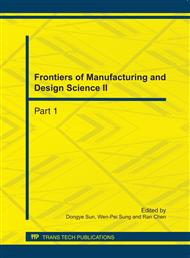p.2624
p.2630
p.2636
p.2643
p.2648
p.2653
p.2661
p.2666
p.2671
Designing a Negative Air Ions Distribution Pattern for Human Health in a House Garden by Using Geostatistical Approach and a Negative Air Ion Generates Experiment
Abstract:
The purpose of this research is to design a negative air ions (NAI) distribution for a house garden in enhancing human health. This study presented an effective approach in integrating air ion monitoring, variograms, Kriging and sprinkler experiment, based on a case study in central Taiwan. Twelve months monitoring of the air ion at thirty sample sites is an effective method for generating spatial and temporal NAI concentrations in the study areas. The measurement results showed that the lowest mean and standard deviation of NAI occurred in January. The highest mean and standard deviation value of NAI occurred in July and June. Factors that impact NAI concentration include types of NAI source, landscape layout, distances to NAI source. The ability of waterfall to generate NAI is larger than sprinkler. The area close to waterfall and far to sprinkler is high NAI concentration. Kriging estimation is useful in evaluating and mapping of spatial negative air ions patterns in a house garden. The maps showed the highest NAI next to the waterfall and lower NAI are the areas next to the entrance of the garden and residence. An experiment found that sprinkler has high ability to generate NAI through the Lenard effect. According to the map which sums up the twelve months NAI concentration, the study garden should set up three sprinklers to increase 5.28 times more NAI concentration, increases 7.56 times of mean NAI when there was any sprinkler. This study provides a hybrid approach to assess and mapping the patterns of negative air ions for future garden design with health concept.
Info:
Periodical:
Pages:
2648-2652
Citation:
Online since:
October 2011
Authors:
Keywords:
Price:
Сopyright:
© 2012 Trans Tech Publications Ltd. All Rights Reserved
Share:
Citation:


